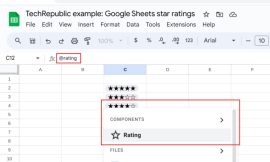
Properly calculating and filing payroll taxes for household employees protects you from liability and gets you access to tax breaks. But figuring out who is and isn’t a household employee (and who you need to pay taxes for) can be tricky. In this primer, we cover the basics of what you need to know about payroll tax forms and deadlines for household employers.
Who counts as a household employee?
Some examples of possible household employees include housekeepers, maids, nannies and gardeners — but you must also take into account how frequently you hire them and how much you pay them. Generally speaking, house workers count as your employees if you control both the work they do and how they do it for a substantial chunk of their time.
For instance, hiring a babysitter once a month to watch your kid for date night generally does not count as a household employee because you’re paying them so infrequently. However, a nanny who lives on your property and watches your children at least five days a week would be considered a household employee.
Business people who provide their services — such as plumbers, carpenters and HVAC techs — are not usually considered household employees because you don’t control how they complete the work. Instead, they are considered independent contractors.
Who pays household employer taxes?
Household employee taxes, sometimes called nanny taxes, are federal and state taxes owed on wages paid to household employees. You will owe these taxes if you paid any single household employee more than $2,600 in cash wages in 2023. The minimum is rising slightly in 2024 to $2,700 in cash wages.
The main taxes are Social Security, Medicare and federal unemployment taxes (FUTA). A portion of these taxes are paid by the employers, and the rest are taken out of the employees wages. Here’s a handy chart that summarizes the tax rates:
| Tax | Employer portion | Household employee portion |
|---|---|---|
| Social Security | 6.2% | 6.2% |
| Medicare | 1.45% | 1.45% |
| FUTA | Varies (0.6%-6.0%) | N/A |
As you can see, only the employer pays the FUTA tax. If you must pay state unemployment taxes where you live, then you may receive a credit of up to 5.4% on your federal unemployment taxes, which is why that number varies. For more information, check out our guides that explain how to calculate payroll taxes and when payroll taxes are due.
| Using payroll software like SurePayroll makes it easy to automatically calculate and file all necessary taxes so that you don’t have to worry about remaining compliant. |
Common payroll tax forms for household employers
Form 1040-ES
Form 1040-ES is used to file estimated taxes with the IRS throughout the year. Estimated taxes are due quarterly, so four times a year. The due dates in 2024 are:
- April 15, 2024
- June 15, 2024
- September 15, 2024
- January 15, 2025
For 2023, the deadlines were:
- April 18, 2023
- June 15, 2023
- September 15, 2023
- January 16, 2024
As per the IRS rules, household employers are not required to withhold the employee’s portion of federal taxes from their employees’ wages if they fall underneath that $2,600 yearly cutoff, but some household employers under that cutoff may ask their employer to withhold the taxes anyways.
Form W-2
If you withhold taxes on behalf of your household employee, then you will almost certainly be required to file a W-2 form on their behalf. A W-2 form contains information that employees use to file their personal tax returns. A W-2 form shows what wages an employee was paid during a calendar year and what federal, state and local taxes were withheld from their paycheck. The W-2 form will also include relevant fringe benefits such as health insurance and retirement account contributions.
A W-2 form must be filed for each employee who received more than $600 in pay during the calendar year. If your household worker is classified as a freelancer, independent contractor or non-employee, then you’ll send them a 1099 form instead. All W-2 forms must be completed and filed no later than January 31 of the following calendar year, so W-2 forms for 2023 are due by January 31, 2024. For more information, see our W-2 form guide.
Form W-3
Form W-3 is also called the “Transmittal of Wage and Tax Statements.” Any employer who files a W-2 must also file a W-3. Form W-3 is used to summarize the W-2 information for all of your employees. The IRS use the W-3 form to check against employees’ personal tax returns to make sure that the numbers reported are accurate. Like W-2 forms, all W-3 forms must be completed and filed no later than January 31 of the following calendar year.
Schedule H (Form 1040)
Schedule H is a tax form that is used to report house household employment taxes if you paid cash wages to a household employee and the wages were subject to social security, Medicare or FUTA taxes, or if you withheld federal income tax.
You must include Schedule H as part of your tax return if you paid any single employee at least $2,600 in the 2023 tax year or if cash wages to all household employees totaled $1,000 or more during any three-month calendar quarter during either the current or previous tax year. You must file Schedule H if you withheld federal income tax at an employee’s request, even if their wages fell below the cutoff just mentioned.
Importance of compliance with payroll tax regulations
Properly calculating and filing household employer taxes is of paramount importance. Underpaying calculating household employee taxes often results in a hefty penalty fee at both the federal and state government levels. Incorrectly calculating or filing household employer taxes can also open you up to an audit, which is a time consuming and costly process.
Properly setting up your household employees also allows you to take advantage of tax breaks and credit, such as the Dependent Care Flexible Spending Account (FSA) or the federal Child and Dependent Care Tax Credit that can help to cover some of the expenses.
If you already have household employees or plan to hire one, we strongly urge you to seek counsel from a CPA or another expert familiar with household employee taxes. They’ll help you get everything set up properly and make sure that you are getting all possible tax breaks. We also recommend looking into a nanny payroll service that makes it easy to calculate and file all necessary household employee taxes.
Source of Article



